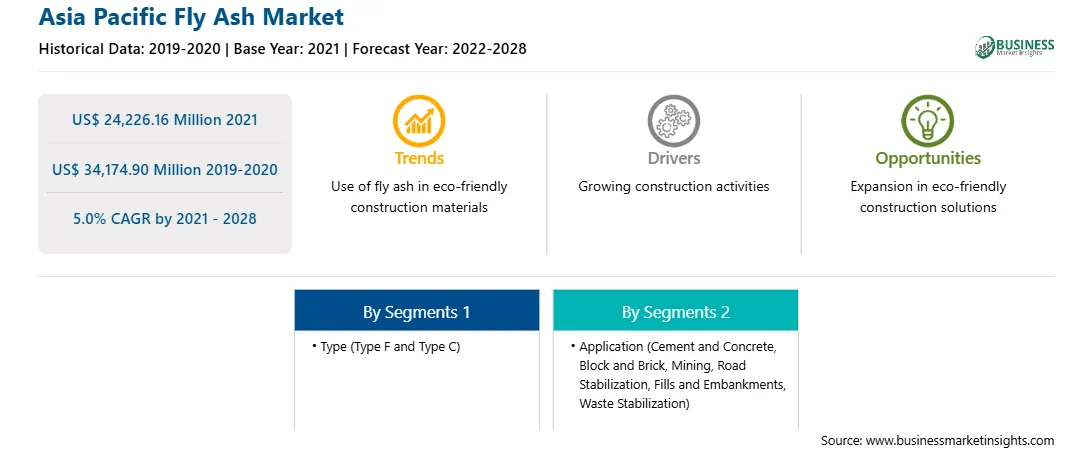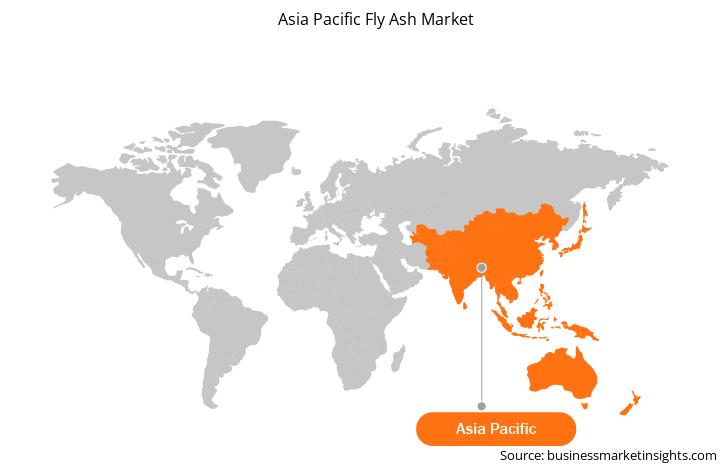There is a rising inclination toward sustainable and green construction activities using more resource-efficient construction methods, including the usage of alternative materials. Various industrial materials replace non-renewable materials, conserve natural resources, and reduce pollution and energy consumption. Power & heating plants produce massive amounts of waste material. Fly ash is a byproduct of the coal-burning power industry. It is used in various applications, such as concrete and cement, manufacturing bricks and blocks, and road embankments. Concrete, a well-known building material, uses cement. Cement manufacturing is a very energy-intensive process. Moreover, there has been a growing concern about the increasing concentrations of greenhouse gases (GHG) in the atmosphere. Carbon Dioxide (CO2) is the GHG that people are most concerned of. Cement production is highly responsible for carbon dioxide emissions. Fly ash can be used as a substitute for some of the cement in concrete to make it more sustainable with reduced emission of CO2 and less impact on the environment and energy. The use of fly ash in concrete also reduces the amount of heat generated in the concrete mass. Additionally, the water demand is reduced with the incorporation of fly ash in concrete. Furthermore, the use of fly ash in the manufacture of bricks provides an opportunity to manage the increasingly generated fly ash and reduce the environmental footprint. Hence, the increasing use of fly ash in producing green building materials, owing to the rising inclination towards sustainable and green constructions, is expected to offer more growth opportunities for the APAC market in the coming years.
Asian economies have been hit hard due to the COVID-19 pandemic. Many thermal power plants were not fully operational during 2020, influencing fly ash generation. Due to lockdown measures, construction materials did not reach the site, which hampered the construction work. Governments of various Asia Pacific countries adopted potential methods to restrict the spread of the novel coronavirus by announcing country-wide lockdowns, which directly impacted the growth of industrial sectors such as construction and engineering.
With the new features and technologies, vendors can attract new customers and expand their footprints in emerging markets. This factor is likely to drive the APAC fly ash market. The APAC fly ash market is expected to grow at a good CAGR during the forecast period.
Strategic insights for the Asia Pacific Fly Ash provides data-driven analysis of the industry landscape, including current trends, key players, and regional nuances. These insights offer actionable recommendations, enabling readers to differentiate themselves from competitors by identifying untapped segments or developing unique value propositions. Leveraging data analytics, these insights help industry players anticipate the market shifts, whether investors, manufacturers, or other stakeholders. A future-oriented perspective is essential, helping stakeholders anticipate market shifts and position themselves for long-term success in this dynamic region. Ultimately, effective strategic insights empower readers to make informed decisions that drive profitability and achieve their business objectives within the market.

| Report Attribute | Details |
|---|---|
| Market size in 2021 | US$ 24,226.16 Million |
| Market Size by 2028 | US$ 34,174.90 Million |
| Global CAGR (2021 - 2028) | 5.0% |
| Historical Data | 2019-2020 |
| Forecast period | 2022-2028 |
| Segments Covered |
By Type
|
| Regions and Countries Covered | Asia-Pacific
|
| Market leaders and key company profiles |
The geographic scope of the Asia Pacific Fly Ash refers to the specific areas in which a business operates and competes. Understanding local distinctions, such as diverse consumer preferences (e.g., demand for specific plug types or battery backup durations), varying economic conditions, and regulatory environments, is crucial for tailoring strategies to specific markets. Businesses can expand their reach by identifying underserved areas or adapting their offerings to meet local demands. A clear market focus allows for more effective resource allocation, targeted marketing campaigns, and better positioning against local competitors, ultimately driving growth in those targeted areas.

The Asia Pacific Fly Ash Market is valued at US$ 24,226.16 Million in 2021, it is projected to reach US$ 34,174.90 Million by 2028.
As per our report Asia Pacific Fly Ash Market, the market size is valued at US$ 24,226.16 Million in 2021, projecting it to reach US$ 34,174.90 Million by 2028. This translates to a CAGR of approximately 5.0% during the forecast period.
The Asia Pacific Fly Ash Market report typically cover these key segments-
The historic period, base year, and forecast period can vary slightly depending on the specific market research report. However, for the Asia Pacific Fly Ash Market report:
The Asia Pacific Fly Ash Market is populated by several key players, each contributing to its growth and innovation. Some of the major players include:
The Asia Pacific Fly Ash Market report is valuable for diverse stakeholders, including:
Essentially, anyone involved in or considering involvement in the Asia Pacific Fly Ash Market value chain can benefit from the information contained in a comprehensive market report.